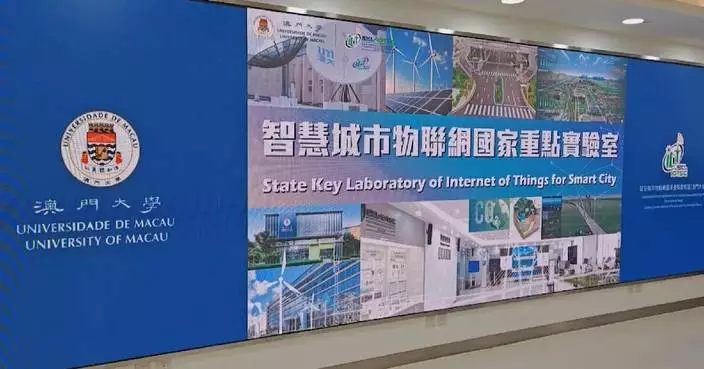China has constructed the world's largest transparent spherical detector 700 meters underground to capture elusive neutrinos, often dubbed "ghost particles," to unravel the secrets of the infinitesimally small and the infinitely vast in the universe.
The 12-story-tall acrylic sphere with a diameter of 35.4 meters, buried deep in a granite layer of a hill in Kaiping, Jiangmen City in south China's Guangdong Province, is the core part of the Jiangmen Underground Neutrino Observatory (JUNO), a gigantic and complex scientific facility.
The gigantic sphere, weighing approximately 600 tons, composed of 263 pieces of 12-centimeter-thick acrylic panels of different sizes, has been meticulously assembled from top to bottom by the construction team.
In order to construct this massive and complex scientific device, the team of scientists and engineers have overcome a series of unprecedented technological challenges.
The team excavated and built an underground cavern to accommodate the facility with its arched roof spanning 49.5 meters, setting a record in China.
To make the sphere and the liquid inside as transparent as possible, the total amount of dust in the 20,000 tonnes of liquid must not exceed 0.008 grams.
The team have developed photomultiplier tubes with independent intellectual property rights, boasting the highest photon detection efficiency. They have also created an underwater explosion-proof system for photomultiplier tubes, and conducted over 30 underwater explosion-proof experiments.
They have innovated the design of the underwater electronic components, achieving aerospace-level reliability with a requirement of a failure rate of less than 0.5 percent within six years.
"This detector is the world's largest liquid scintillator neutrino detector. Actually, we cannot see the stainless steel frame and acrylic sphere from this angle. What we are seeing now are the outermost geomagnetic shielding coil, the white reflective film and more than 2,000 photomultiplier tubes on the outer surface of the sphere. Besides, we can see tens of thousands of cables running on the wall of the water tank to the electronic rooms on either side of us. They are responsible for transmitting signals from the detector. In the future, the detector will work in liquid. We will fill it with 20,000 tons of liquid scintillator and the water tank outside the sphere with 35,000 tons of ultra-pure water. So all the materials and components of the detector are carefully selected. They must withstand long-term reliability tests to ensure 30 years of safe and stable operation of the detector," said Ma Xiaoyan, chief engineer of JUNO.
"As we can see, our workers are carrying out the final work on the stainless steel frame outside the acrylic sphere. It is also a mesh sphere with a diameter of 41 meters, serving as the main support structure. As the environment has a very high requirement for cleanliness, no welding is allowed here. This frame was assembled with 120,000 sets of stainless steel high strength rivets. Up the steel frame, we can see many golden bulbs. They are called photomultiplier tubes, also a key part of the detector. We have a nice nickname for them - golden eyes, as they are responsible for capturing neutrino signals generated from inside the sphere, like eyes of the detector. So far, 90 percent of the photomultiplier tubes have been installed, and the installation is expected to finish next month. When all the devices of the detector in the water tank are installed, the bottom of the water tank will be blocked. And then, we will fill the sphere and the water tank with liquid, so the place we are in now will be filled with ultra-pure water," Ma said.
JUNO is the second China-based neutrino project, following the Daya Bay Reactor Neutrino Experiment in Guangdong. Chinese and foreign physicists announced in 2012 that they had measured a third type of neutrino oscillation in the Daya Bay experiment. The scale of JUNO is much larger than the Daya Bay experiment with more sensitive detection.
The construction of the challenging project, launched by the Chinese Academy of Sciences (CAS) and the Guangdong government in 2015, has entered the final stage. Installation of the entire device is expected to be completed by the end of November, and the full operation of the facility is scheduled for August 2025, according to the Institute of High Energy Physics (IHEP) of the CAS, the project's leading institution.
Once completed, JUNO is expected to capture approximately 40 reactor neutrinos, several atmospheric neutrinos, one geoneutrino and thousands of solar neutrinos every day. With data collection over a period of six years, it is estimated that around 100,000 neutrinos can be detected by the lab.
As one of the world's most powerful experiments to uncover neutrino mystery, JUNO is expected to operate for at least 30 years. The observatory is designed to help scientists better understand the neutrino mass hierarchy by detecting reactor neutrinos from the nearby Yangjiang and Taishan nuclear power plants with an unprecedented 3 percent energy resolution.
The facility will also help scientists conduct other cutting-edge studies such as observing supernova, atmospheric and solar neutrinos.
Over 700 scientists from 74 institutions in 17 countries and regions including France, Italy, Russia, Germany and Belgium have joined the JUNO international collaboration.

China builds huge underground transparent spherical detector to trap "ghost particles"









